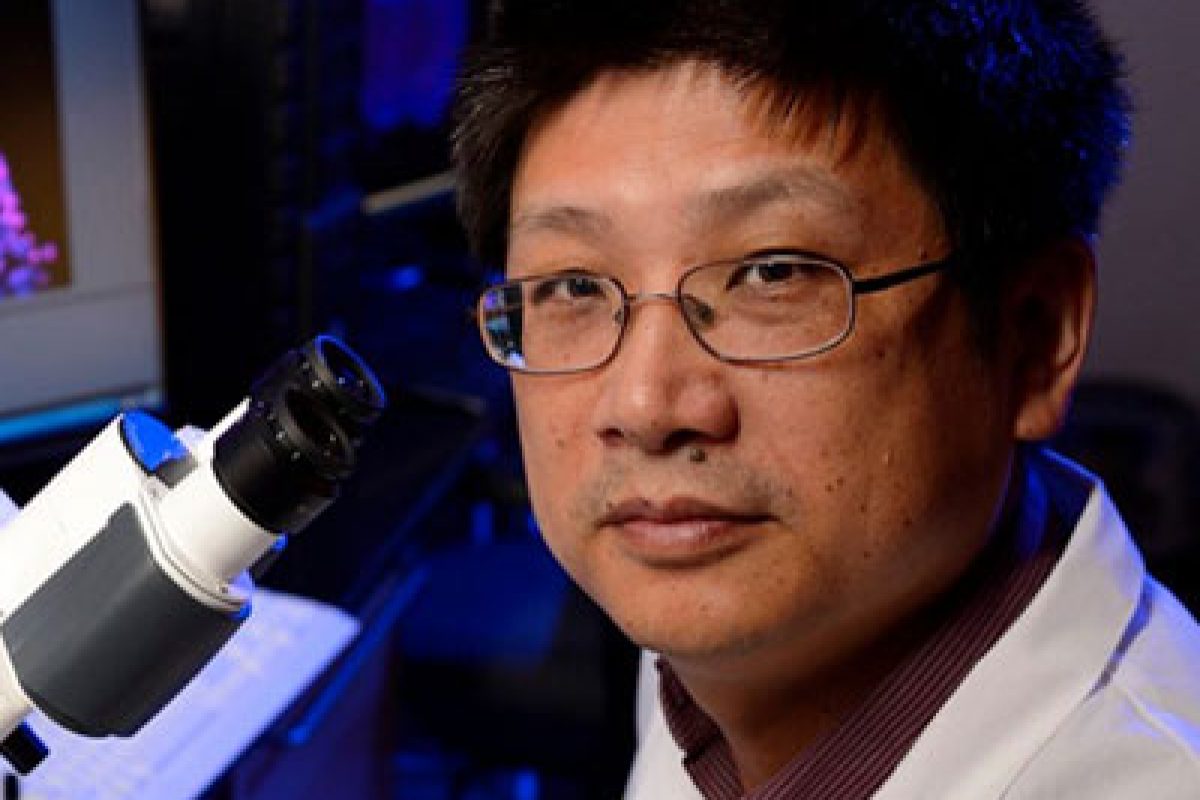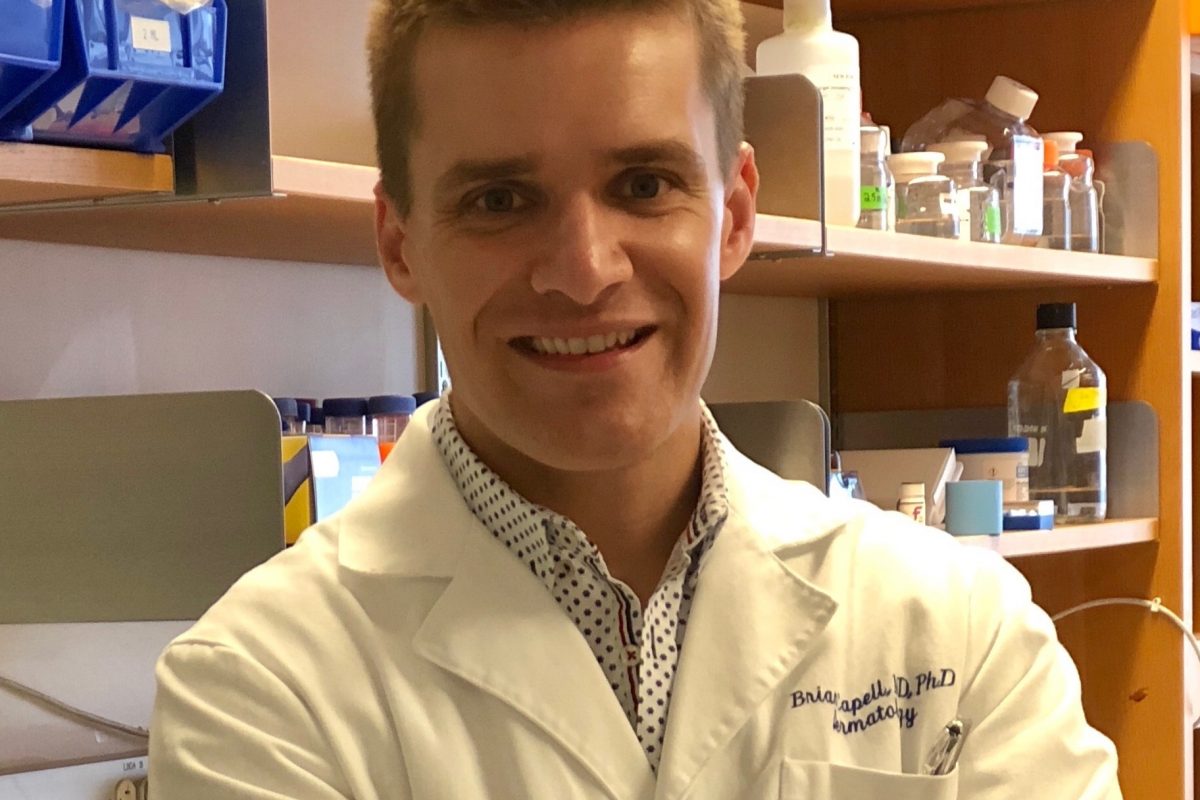1. Role of STAMP2 (STEAP4) in modulating inflammatory and metabolic responses in adipocytes: My interest in metabolism began while I was a graduate student in the laboratory of Gökhan S. Hotamisligil. My work in the Hotamisligil lab specifically focused on the role of six-transmembrane protein of prostate 2 (STAMP2; also known at STEAP4). We because interested in STAMP2 from a gene expression study that I performed at the start of my graduate training, in which we found that STAMP2 expression was induced by the inflammatory cytokine TNFα and suppressed by thiazolidinediones (Endocrinology, 2004). During the rest of my graduate training years, I worked to elucidate the function of STAMP2 in adipocytes, using both cell culture and mouse models. We found that STAMP2 acts to prevent inappropriate activation of inflammatory pathways in adipocytes, thereby contributing to the maintenance of systemic insulin sensitivity (Cell, 2007). We also published an influential review article that has been cited over 4000 times to date.
Wellen KE, Uysal KT, Wiesbrock S, Yang Q, Chen H, Hotamisligil GS. Interaction of tumor necrosis factor-alpha- and thiazolidinedione-regulated pathways in obesity. Endocrinology. 2004 May;145(5):2214-20. PubMed PMID: 14764635.
Wellen KE, Hotamisligil GS. Inflammation, stress, and diabetes. J Clin Invest. 2005 May;115(5):1111-9. PubMed PMID: 15864338; PubMed Central PMCID: PMC1087185.
Wellen KE, Fucho R, Gregor MF, Furuhashi M, Morgan C, Lindstad T, Vaillancourt E, Gorgun CZ, Saatcioglu F, Hotamisligil GS. Coordinated regulation of nutrient and inflammatory responses by STAMP2 is essential for metabolic homeostasis. Cell. 2007 May 4;129(3):537-48. PubMed PMID: 17482547; PubMed Central PMCID: PMC2408881.
The hexosamine biosynthetic pathway in coordination of metabolic and signaling pathways: After obtaining my PhD, I joined Craig B. Thompson’s laboratory, to further develop my expertise in cellular metabolism and gain training in the re-emerging field of cancer metabolism. I sought to understand how cells gauge nutrient availability and, to this end, investigated the role of the hexosamine biosynthetic pathway, which generates the glycosyl donor UDP-GlcNAc. We found that glucose utilization in the hexosamine pathway impacts growth factor receptor N-glycosylation and surface presentation, and that this serves as a mechanism to coordinate glucose and glutamine metabolism to support proliferation in hematopoietic cells (Genes and Development, 2010). More recently, we have reexamined the regulation of the hexosamine pathway under conditions of nutrient deprivation, identifying that pancreatic cancer cells employ a little studied hexosamine salvage pathway in response to glutamine deprivation to feed UDP-GlcNAc pools (eLife, 2021).
Wellen KE, Lu C, Mancuso A, Lemons JM, Ryczko M, Dennis JW, Rabinowitz JD, Coller HA, Thompson CB. The hexosamine biosynthetic pathway couples growth factor-induced glutamine uptake to glucose metabolism. Genes Dev. 2010 Dec 15;24(24):2784-99. PubMed PMID: 21106670; PubMed Central PMCID: PMC3003197.
Wellen KE, Thompson CB. A two-way street: reciprocal regulation of metabolism and signalling. Nat Rev Mol Cell Biol. 2012 Mar 7;13(4):270-6. PubMed PMID: 22395772.
Campbell SL and Wellen KE. Metabolic Signaling to the Nucleus in Cancer. Mol Cell, 2018 Aug 2; 71(3): 398-408. PMID: 30075141.
Campbell SL, Mesaros C, Izzo L, Affronti H, Noji M, Schaffer, BE, Tsang T, Sun K, Trefely S, Kruijning S, Blenis J, Blair IA, Wellen KE. Glutamine deprivation triggers NAGK-dependent hexosamine salvage, eLife, 2021
Acetyl-CoA at the interface of lipid metabolism and epigenetics: roles in cellular and organismal physiology: My interest in metabolic regulation of the epigenome, which constitutes a major current focus on my lab, also developed during my postdoctoral work in the Thompson lab. When I joined the Thompson lab in 2006, the lab had been studying acetyl-CoA metabolism and its role in supporting tumor growth through de novo lipid synthesis. Whether acetyl-CoA levels are also regulatory for lysine acetylation had been speculated and evidence for this had emerged in yeast, but little to no evidence for this possibly existed in mammalian cells. We found that acetyl-CoA production by ATP-citrate lyase (ACLY) is critical for maintaining overall levels of histone acetylation in multiple mammalian cell types, including adipocytes. This initial study, published in Science, was one of the first papers demonstrating metabolic control of the epigenome in mammalian cells. Since starting my own laboratory in 2011, we have extensively investigated the role of acetyl-CoA metabolism in regulation of lipid metabolism and the epigenome. We reported the development of Aclyf/f mice and MEF cell lines, as well as Adiponectin-Cre;Aclyf/f (adipocyte-specific KO) mice (Cell Reports, 2016). Using these reagents, we demonstrate that upregulation of ACSS2 and engagement of acetate metabolism is a key mechanism of compensation to supply acetyl-CoA for histone acetylation and lipid synthesis in the absence of ACLY, in vitro and in vivo. We further found that fructose metabolism to acetate produced by gut microbiota represents a key source of acetyl-CoA for hepatic lipogenesis (Nature, 2020). We also demonstrated that ACLY is crucial for sucrose-induced activation of ChREBP in adipocytes and in sustaining systemic metabolic homeostasis during carbohydrate feeding (Cell Reports, 2019).
Wellen KE, Hatzivassiliou G, Sachdeva UM, Bui TV, Cross JR, Thompson CB. ATP-citrate lyase links cellular metabolism to histone acetylation. Science. 2009 May 22;324(5930):1076-80. PubMed PMID: 19461003; PubMed Central PMCID: PMC2746744.
Zhao S, Torres AM, Henry R, Trefely T, Wallace M, Lee JV, Carrer A, Sengupta A, Kuo YM, Frey AJ, Meurs N, Viola JM, Blair IA, Weljie A, Snyder NW, Andrews AJ, Wellen KE. ATP-citrate lyase controls a glucose-to-acetate metabolic switch, Cell Rep, 2016, Oct 18;17(4):1037-1052. Pubmed PMID: 27760311; PubMed Central PMCID: PMC5175409
Fernandez S, Viola JM, Torres A, Wallace M, Trefely S, Zhao S, Affronti HC, Gengatharan JM, Guertin DA, Snyder NW, Metallo CM, Wellen KE. Adipocyte ACLY facilitates dietary carbohydrate handling to maintain metabolic homeostasis in females. Cell Rep, 2019, May 28;27(9):2772-2784. PubMed PMID:31141698; PubMed Central PMCID: PMC6608748
Zhao S, Jang C, Liu J, Uehara K, Gilbert M, Izzo L, Zeng X, Trefely S, Fernandez S, Carrer A, Miller KD, Schug ZT, Snyder NW, Gade TP, Titchenell PM, Rabinowitz JD, Wellen KE. Dietary fructose feeds hepatic lipogenesis via microbiota-derived acetate, Nature. 2020, Mar;579(7800):586-591. PubMed PMID: 32214246.
Acetyl-CoA at the interface of lipid metabolism and epigenetics: roles in tumor development and progression. A major emphasis of my laboratory has been to investigate the role of acetyl-CoA metabolism and metabolic control of the epigenome in tumor development and progression. One of the key questions we have sought to answer is whether oncogene-mediated metabolic rewiring impacts acetyl-CoA pools in such a way as to modulate the tumor epigenome. We found that oncogenic activation of the PI3K-AKT pathway promotes nuclear-cytosolic acetyl-CoA production and histone acetylation via ATP-citrate lyase (ACLY). Consistently, in human tumors, we identified a significant positive correlation between pAKT-S473 and histone acetylation levels. This study was published in Cell Metabolism and was one of the first demonstrations that oncogenic metabolic reprogramming contributes to alterations in the tumor epigenome independent of mutations in genes encoding metabolic enzymes. Following up on this study, we have identified a role for ACLY-S455 phosphorylation within the nucleus in providing acetyl-CoA for histone acetylation near sites of DNA double strand breaks, which facilitates BRCA1 recruitment and DNA repair by homologous recombination (Molecular Cell, 2017). We have also found that ACLY is crucial for KRASG12D-driven histone acetylation in pancreatic acinar cells and plays a distinct role in supporting acinar-to-ductal metaplasia in early pancreatic tumorigenesis. Once tumors form, however, ACSS2 is highly expressed and tumors can grow even in the absence of ACLY. Despite this metabolic flexibility, we found that targeting of downstream acetyl-CoA producing processes, specifically the mevalonate pathway and the reading of acetyl-lysine, can suppress tumor growth (Cancer Discovery, 2019). Most recently, in collaborative work with Nathaniel Snyder, we have developed methodology for compartmentalized acyl-CoA analysis termed SILEC-SF and leveraged this approach to discover that propionyl-CoA is enriched in the nucleus and that isoleucine catabolism feeds nuclear propionyl-CoA pools and histone lysine propionylation (Trefely et al, Mol Cell, 2022).
Lee JV, Carrer A, Shah S, Snyder NW, Wei S, Venneti S, Worth AJ, Yuan ZF, Lim HW, Liu S, Jackson E, Aiello NM, Haas NB, Rebbeck TR, Judkins A, Won KJ, Chodosh LA, Garcia BA, Stanger BZ, Feldman MD, Blair IA, Wellen KE. Akt-dependent metabolic reprogramming regulates tumor cell histone acetylation. Cell Metab. 2014 Aug 5;20(2):306-19. PubMed PMID: 24998913; PubMed Central PMCID: PMC4151270.
Sivanand S, Rhoades S, Jiang Q, Viney I, Zhang J, Tang J, Benci J, Yuan S, Zhao S, Carrer A, Bennett MJ, Minn AJ, Weljie AM, Greenberg RA, Wellen KE. Nuclear acetyl-CoA production by ACLY promotes homologous recombination, Mol Cell, 2017 Jul 20 Jul 20;67(2):252-265. PubMed PMID: 28689661; PubMed Central PMCID: PMC5580398
Carrer A, Trefely S, Zhao S, Campbell SL, Norgard RJ, Schultz KC, Sidoli S, Parris JLD, Affronti HC, Sivanand S, Egolf S, Sela Y, Trizzino M, Gardini A, Garcia BA, Snyder NW, Stanger BZ, Wellen KE. Acetyl-CoA metabolism supports multi-step pancreatic tumorigenesis. Cancer Discov. 2019 Mar;9(3):416-435. PubMed PMID: 30626590; PubMed Central PMCID: PMC6608748
Trefely S, Huber K, Liu J, Noji M, Stransky S, Singh J, Doan MT, Lovell CD, von Krusenstiern E, Jiang H, Bostwick A, Pepper HL, Izzo L, Zhao Z, Xu JP, Bedi Jr KC, Rame JE, Sidoli S, Bogner-Strauss J, Mesaros C, Wellen KE*, Snyder NW*. Quantitative sub-cellular acyl-CoA analysis reveals distinct nuclear metabolism and isoleucine-dependent histone propionylation, Mol Cell, 2022 (*co-corresponding authors)
Research Interest
cancer metabolism, metabolic regulation of the epigenome, metabolic signaling










